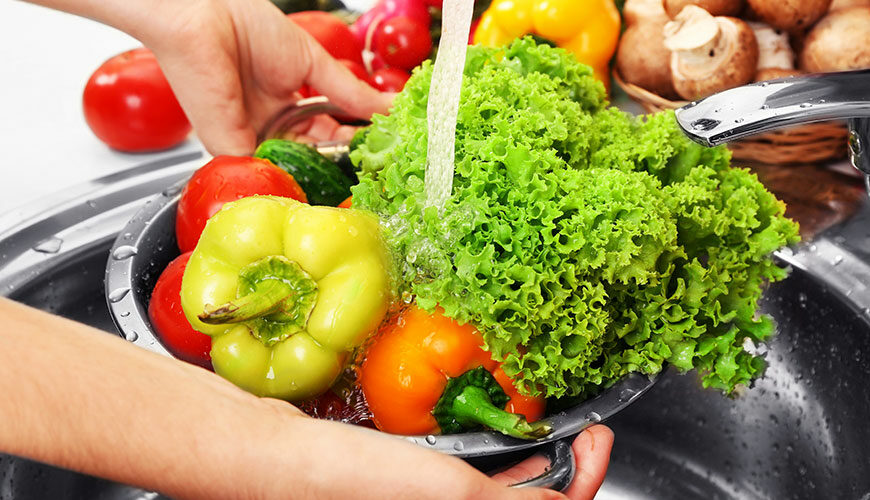Introduction
Food safety is a crucial aspect of our daily lives that often goes unnoticed until a major health crisis strikes. Ensuring that the food we consume is safe and free from harmful contaminants is essential to protect public health and prevent foodborne illnesses. From production and processing to distribution and preparation, multiple steps must be taken to maintain food safety throughout the entire food supply chain. This article explores the importance of food safety, common hazards, preventive measures, and the role of regulatory bodies in safeguarding our plates.
Understanding Food Safety
Food safety refers to the process of handling, preparing, and storing food to prevent contamination and foodborne illnesses. The World Health Organization (WHO) estimates that about 600 million people fall sick and 420,000 die each year due to foodborne diseases. Contaminated food can contain harmful microorganisms, chemicals, allergens, or physical hazards that can pose serious health risks to consumers. Ensuring food safety involves identifying and mitigating potential hazards at every stage of the food supply chain.
Hazards in the Food Supply Chain
a) Biological Hazards: These include bacteria, viruses, parasites, and fungi that can contaminate food and cause illnesses like salmonellosis, E. coli infections, and listeriosis. Cross-contamination during food handling and inadequate cooking are common causes of biological contamination.
b) Chemical Hazards: Chemical contaminants such as pesticides, heavy metals, and food additives can enter the food chain through various means, including agricultural practices, food processing, and packaging materials. Prolonged exposure to these substances can lead to chronic health problems.
c) Physical Hazards: Foreign objects like glass, metal, plastic, or stones can accidentally find their way into food during processing or packaging, posing a choking or injury risk to consumers.
d) Allergens: Allergens, such as nuts, soy, dairy, gluten, and shellfish, can trigger severe allergic reactions in susceptible individuals. Proper labeling and handling are essential to avoid allergen cross-contact.
Preventive Measures
a) Good Agricultural Practices (GAPs): Implementing GAPs ensures safe and hygienic practices during crop cultivation and harvesting. This includes proper use of pesticides, clean water sources, and regular inspection of fields to prevent biological and chemical contamination.
b) Food Processing and Handling: Food processing industries must adhere to Good Manufacturing Practices (GMPs) to maintain hygiene, sanitation, and proper temperature control. Regular equipment maintenance and employee training are crucial to minimize contamination risks.
c) Safe Storage and Transportation: Proper storage conditions, including temperature control and segregation of different food items, are essential to prevent spoilage and cross-contamination during transportation.
d) Safe Cooking Practices: Cooking food thoroughly at the right temperature kills harmful bacteria and viruses. Using food thermometers and following cooking guidelines can help avoid undercooked food.
e) Personal Hygiene: Practicing good personal hygiene, such as handwashing, using gloves while handling food, and wearing clean clothing, is essential for preventing the spread of pathogens.
f) Food Labeling: Clear and accurate food labeling helps consumers identify potential allergens and make informed choices based on their dietary needs.
Regulatory Framework for Food Safety
a) International Standards: The Codex Alimentarius, a joint initiative by the WHO and the Food and Agriculture Organization (FAO), establishes international food standards, guidelines, and codes of practice to ensure food safety and fair trade.
b) National Regulatory Bodies: Each country has its own food safety regulatory authority responsible for establishing and enforcing food safety standards. These agencies conduct inspections, issue permits, and impose penalties for non-compliance.
c) HACCP: Hazard Analysis Critical Control Points (HACCP) is a systematic preventive approach that identifies, evaluates, and controls hazards at critical points in the food production process.
d) Recall Systems: Regulatory bodies implement recall systems to remove unsafe food products from the market and protect consumers from potential hazards.
Emerging Challenges and Future Prospects
a) Globalization and Supply Chain Complexity: As the food supply chain becomes more globalized, the risk of contamination and the challenges of traceability increase. International cooperation and advanced tracking technologies are essential to address these issues.
b) Climate Change: Climate change impacts food safety by affecting agricultural practices, water availability, and the spread of pests and diseases. Adapting agricultural methods and investing in climate-resilient infrastructure are essential steps to mitigate risks.
c) Technology and Food Safety: Advancements in technology, such as blockchain, Internet of Things (IoT), and artificial intelligence, can revolutionize food safety by enabling real-time monitoring, traceability, and rapid response to potential hazards.
d) Consumer Awareness: Increasing consumer awareness about food safety, nutrition, and the importance of reading food labels can drive demand for safe and sustainable food products.
Conclusion
Ensuring food safety is a shared responsibility that involves all stakeholders, including governments, producers, processors, retailers, and consumers. By understanding the hazards, implementing preventive measures, and adhering to regulatory guidelines, we can collectively safeguard our plates and protect public health. As technology and awareness continue to advance, the future of food safety holds promising prospects for a safer and healthier world.





